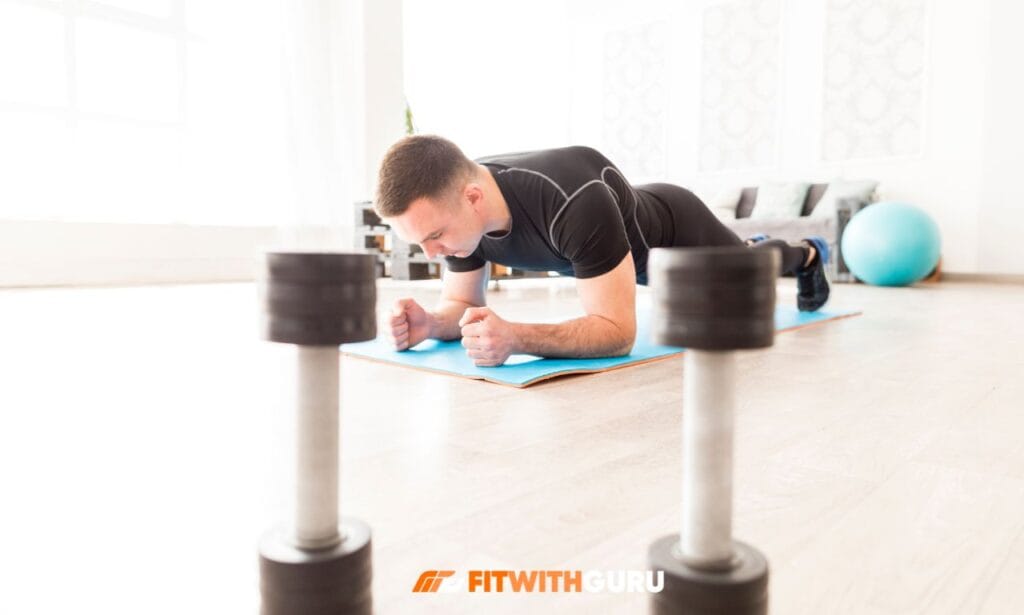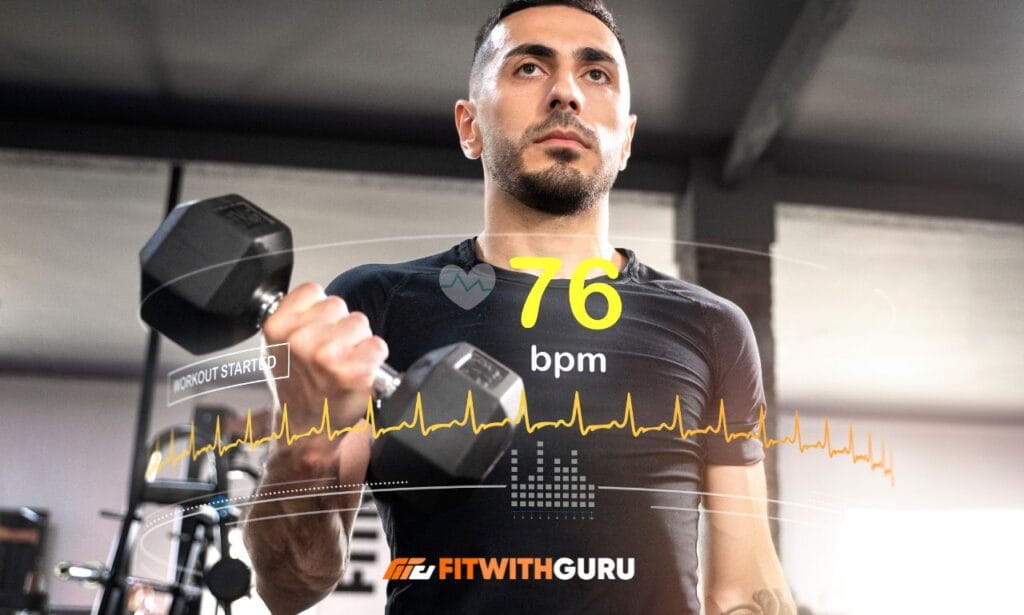A 6 week calisthenics workout plan can completely reshape your physique without requiring expensive gym memberships or fancy equipment. Just your body weight, dedication, and a structured approach to training.
I’ve watched dozens of people transform their bodies using nothing but calisthenics, and the results speak for themselves—lean muscle, functional strength, and athletic mobility that gym rats often lack. Let me walk you through exactly how to build the body you’ve always wanted using the most accessible form of training available.
Why Choose a 6 Week Calisthenics Program Over Traditional Gym Training
Calisthenics offers something traditional weightlifting simply cannot match: complete freedom. You’re not chained to a gym schedule or waiting for equipment to become available. The beauty of a beginner calisthenics workout plan lies in its accessibility—anyone can start regardless of fitness level.
I remember coaching Sarah, a busy marketing executive who couldn’t commit to gym hours. She started bodyweight training in her living room during lunch breaks. Within six weeks, she’d built visible muscle definition and could perform exercises she never thought possible.
Calisthenics develops functional strength that translates to real-world movements. You’re not isolating muscles on machines; you’re training your body to move as an integrated unit. The neurological adaptations alone make calisthenics superior for athletic performance, balance, and coordination.
Plus, the 6 week calisthenics exercises routine I’m about to share progressively challenges your body without the injury risks associated with heavy lifting.
Understanding the Science Behind Bodyweight Training Progression
Your muscles don’t know the difference between a barbell and your body weight. They only understand tension, time under load, and progressive overload. The key principle in any effective 6 week calisthenics workout is manipulating leverage and range of motion to increase difficulty.
When you start with regular push-ups and progress to archer push-ups, you’re fundamentally increasing the load on individual muscles. This progression model ensures continuous adaptation without plateaus. Research shows that bodyweight training produces comparable hypertrophy results to traditional resistance training when volume and intensity are matched.
The metabolic demands of compound calisthenics movements also trigger substantial growth hormone release. Your body responds to the challenge by building both strength and muscle mass. Understanding this science helps you trust the process when you’re struggling through week three and wondering if it’s actually working.
Breaking Down Your 6 Week Calisthenics Workout Structure
The framework of your 6 week calisthenics workout plan revolves around three training days per week with strategic rest periods. This approach allows adequate recovery while maintaining training frequency for optimal adaptation. Each session targets different movement patterns: push, pull, and leg-dominant exercises.
Here’s the weekly structure: Monday focuses on push-focused training covering chest, shoulders, and triceps. Wednesday concentrates on pull-focused training for back and biceps. Friday targets lower body and core integration. Tuesday, Thursday, and weekends are reserved for active recovery or skill work.
The beauty of this split is the built-in recovery time for specific muscle groups. While your chest recovers from Monday’s push session, you’re training your back on Wednesday. This frequency prevents overtraining while maximizing weekly training volume. Your beginner calisthenics workout plan should always prioritize quality over quantity. Ten perfect push-ups build more strength than thirty sloppy ones.
Weeks 1-2: Building Your Foundation
The first two weeks focus on movement mastery and establishing work capacity. You’re teaching your nervous system proper movement patterns before intensity escalates. Start each session with a thorough warm-up: arm circles, leg swings, light cardio, and dynamic stretching.
Your foundational exercises include regular push-ups for 3 sets of 8-12 reps with 90 seconds rest. Australian rows follow the same structure with 3 sets of 8-12 reps and 90 seconds rest. Bodyweight squats require 3 sets of 15-20 reps with 60 seconds rest.
Plank holds should be maintained for 30-45 seconds across 3 sets with 60 seconds rest. Finally, glute bridges round out the routine with 3 sets of 12-15 reps and 60 seconds rest between sets.
If regular push-ups are too challenging, perform them from your knees or against an elevated surface. The key is maintaining proper form throughout every repetition. I’ve seen too many people rush through this foundation phase and pay for it with injury or burnout later.
Marcus, a former client, ignored my advice about building slowly. He pushed too hard in week one, developed elbow tendinitis, and had to restart the entire program after healing. Don’t be Marcus.

Weeks 3-4: Increasing Volume and Intensity
By week three, your body has adapted to the initial stimulus and demands greater challenges. This is where your 6 week calisthenics exercises routine really starts producing visible changes. You’ll increase total volume by adding sets and introducing progression variations.
Diamond push-ups now take center stage with 4 sets of 6-10 reps and 90 seconds rest. Wide grip rows increase to 4 sets of 8-12 reps with 90 seconds rest. Bulgarian split squats introduce unilateral training with 3 sets per leg of 10-12 reps and 90 seconds rest. Side planks challenge your core with 3 sets per side held for 30-40 seconds with 60 seconds rest. Single-leg glute bridges finish the progression with 3 sets per leg of 10-12 reps and 60 seconds rest.
Notice the shift toward more challenging variations and unilateral movements. Training one limb at a time increases the load without requiring additional equipment. This phase typically brings some muscle soreness as your body responds to increased demands.
Adequate protein intake, roughly 0.8-1 gram per pound of body weight, becomes crucial for recovery. Sleep quality directly impacts your results—aim for 7-9 hours nightly.
Weeks 5-6: Peak Performance and Testing Limits
The final two weeks of your 6 week calisthenics workout push you toward your maximum potential. You’ve built the foundation, increased capacity, and now you’re maximizing results. Exercise selection becomes more advanced, incorporating explosive movements and extended time under tension.
Archer push-ups demand 4 sets per side of 5-8 reps with 2 minutes rest. Chin-ups or negative chin-ups follow with 4 sets of 5-8 reps and 2 minutes rest. Pistol squat progressions challenge your legs with 3 sets per leg of 5-8 reps and 2 minutes rest. L-sit holds target your core with 4 sets of 15-30 seconds and 90 seconds rest. Nordic curl progressions complete the routine with 3 sets of 6-8 reps and 2 minutes rest.
If you cannot perform a full pistol squat yet, use a box or pole for assistance. The goal is progressive challenge, not perfection. Jessica started my program unable to do a single pull-up. By week six, she performed five consecutive chin-ups and cried tears of joy after her final rep. That’s the transformative power of consistent, intelligent training.

Essential Warm-Up and Mobility Routines for Injury Prevention
Never skip your warm-up in pursuit of saving time—it’s shortsighted and dangerous. A proper warm-up prepares your nervous system, increases blood flow, and lubricates joints for the work ahead. Your beginner calisthenics workout plan should always start with 5-10 minutes of preparation.
Begin with general movement: jumping jacks, jogging in place, or shadow boxing. Follow with dynamic stretches specific to your training focus. Arm circles both forward and backward get your shoulders ready. Leg swings front-to-back and side-to-side prepare your hips.
Torso rotations loosen your spine. Cat-cow stretches mobilize your entire back. Wrist circles and mobility drills protect these vulnerable joints. Shoulder dislocations with a band or towel open up your chest and shoulders.
Spend extra time on wrists before any pushing movements. Calisthenics places significant stress on wrist joints, and proper preparation prevents chronic issues. After your workout, dedicate 5-10 minutes to static stretching while muscles are warm and pliable.
Nutrition Guidelines to Maximize Your Calisthenics Results
Training provides the stimulus, but nutrition builds the actual muscle tissue. Your 6 week calisthenics exercises routine won’t produce optimal results without proper fueling. Protein intake should range between 0.8-1 gram per pound of bodyweight to support muscle repair and growth. Spread this across 3-4 meals daily for consistent amino acid availability.
Carbohydrates fuel your workouts and replenish glycogen stores depleted during training. Don’t fall for the low-carb trap—your performance will suffer, and muscle growth will stall. Aim for complex carbohydrates: oats, rice, potatoes, and whole grain products.
Healthy fats support hormone production, including testosterone which drives muscle growth. Include sources like avocados, nuts, olive oil, and fatty fish. Hydration impacts everything from performance to recovery to cognitive function. Drink at least half your body weight in ounces daily, more on training days.
I’ve watched clients sabotage perfect training programs with garbage nutrition. Michael trained consistently for six weeks but lived on fast food and energy drinks. His results were minimal compared to others following the same program with proper nutrition. You cannot out-train a bad diet.
Common Mistakes That Sabotage Calisthenics Progress
The biggest mistake I see in any 6 week calisthenics workout plan is progressing too quickly. Ego lifting exists in bodyweight training just like it does with barbells. Attempting advanced variations before building foundational strength leads to injury and frustration.
Inconsistent training derails more programs than any other factor. Missing workouts means your body never adapts sufficiently to progress. Life happens, but three consistent sessions weekly is non-negotiable for results.
Tracking Progress and Adjusting Your Training Variables
Measuring progress keeps you motivated and provides objective feedback on your 6 week calisthenics workout. Keep a training journal documenting exercises, sets, reps, and how each session felt. This data reveals patterns and helps identify when you’re ready to progress.
Take progress photos every two weeks under consistent lighting and angles. The mirror lies, and daily visual checks can’t capture gradual changes. Photos provide undeniable evidence of your transformation.
Consider tracking maximum reps performed for each exercise, total training volume calculated as sets times reps times bodyweight, body measurements including chest, waist, arms, and thighs, how you feel regarding energy levels, sleep quality, and recovery, plus skill achievements like your first pull-up or first handstand hold.
If progress stalls for two consecutive weeks, adjust training variables. Increase volume, decrease rest periods, or introduce more challenging progressions. Sometimes adding an extra set produces the breakthrough you need.
Beyond Week Six: Maintaining and Building on Your Results
Completing your 6 week calisthenics exercises routine is just the beginning of your journey. The habits and strength you’ve built become the foundation for long-term fitness. Many people wonder what happens after finishing the program. You have several options depending on your goals.
Continue with progressive calisthenics by tackling advanced skills like muscle-ups, front levers, or handstand push-ups. These movements require months or years to master but provide endless training motivation. Alternatively, cycle through another six weeks with increased baseline intensity. What challenged you in weeks 5-6 becomes your new starting point.
Some choose to maintain their results with 2-3 weekly sessions while pursuing other fitness interests. The strength and body awareness you’ve developed transfers beautifully to sports, martial arts, or recreational activities. Remember that fitness is a lifelong journey, not a six-week destination. The discipline and self-efficacy you’ve built extend far beyond physical transformation.
Frequently Asked Questions
Can beginners really see results in just six weeks with calisthenics?
Absolutely—beginners often experience the most dramatic changes during their first six weeks of structured training. Your nervous system adapts rapidly, strength gains come quickly, and body composition shifts visibly with proper nutrition. A beginner calisthenics workout plan is actually ideal because you’re building movement patterns correctly from the start without bad habits to unlearn.
How many days per week should I train during my 6 week calisthenics workout plan?
Three days per week provides optimal results for most people following a 6 week calisthenics workout. This frequency allows adequate recovery between sessions while maintaining enough training stimulus for adaptation. More advanced athletes might train 4-5 days weekly by splitting muscle groups more granularly or incorporating skill work on off days.
Do I need any equipment for a 6 week calisthenics exercises routine?
The beauty of a 6 week calisthenics exercises routine is the minimal equipment requirement. At bare minimum, you need nothing—just your body and floor space. However, a pull-up bar dramatically expands exercise options and is highly recommended. Resistance bands help with progression on difficult movements like pull-ups or muscle-ups. A dip station or parallel bars enable additional pushing and core exercises. Even without these, you can find alternatives using playground equipment, sturdy tables, or doors for rows. Creativity and determination matter more than equipment.
Will calisthenics build muscle as effectively as weight training?
Research demonstrates that properly programmed calisthenics builds muscle comparably to traditional weight training when volume and intensity are equated. The primary difference lies in progression methods, weights use added load while calisthenics manipulates leverage and movement complexity. Your 6 week calisthenics workout plan should progressively overload muscles through harder variations, increased reps, decreased rest, or added time under tension.
What should I do if I can’t complete the prescribed reps or exercises?
Modification is not failure—it’s intelligent training matched to your current ability. Every beginner calisthenics workout plan should include scaling options for different fitness levels. Can’t do regular push-ups? Perform them from your knees or against an elevated surface. Pull-ups too difficult? Start with Australian rows or negative pull-ups. The goal is productive training stress, not ego-driven suffering. As you build strength, gradually reduce assistance until you perform the full movement. This approach prevents injury while ensuring consistent progress toward your goals.
Conclusion
The 6 week calisthenics workout plan I’ve shared represents a proven path to physical transformation. Thousands of people have reshaped their bodies using these exact principles and progressions. You don’t need expensive equipment, complicated programs, or genetic gifts—just consistency and intelligent effort.
The next six weeks will challenge you physically and mentally. There will be days when motivation wanes and workouts feel impossible. Push through those moments, because that’s where real growth happens. Your future self will thank you for the discipline you demonstrate today.
Every push-up, every squat, every moment of discomfort is an investment in a stronger, healthier, more capable version of yourself. The question isn’t whether this 6 week calisthenics exercises routine works—it’s whether you’ll commit to the process long enough to experience the results.

